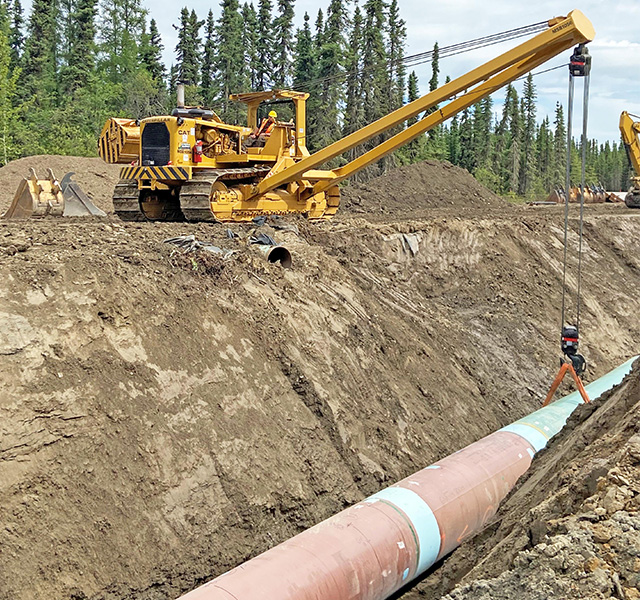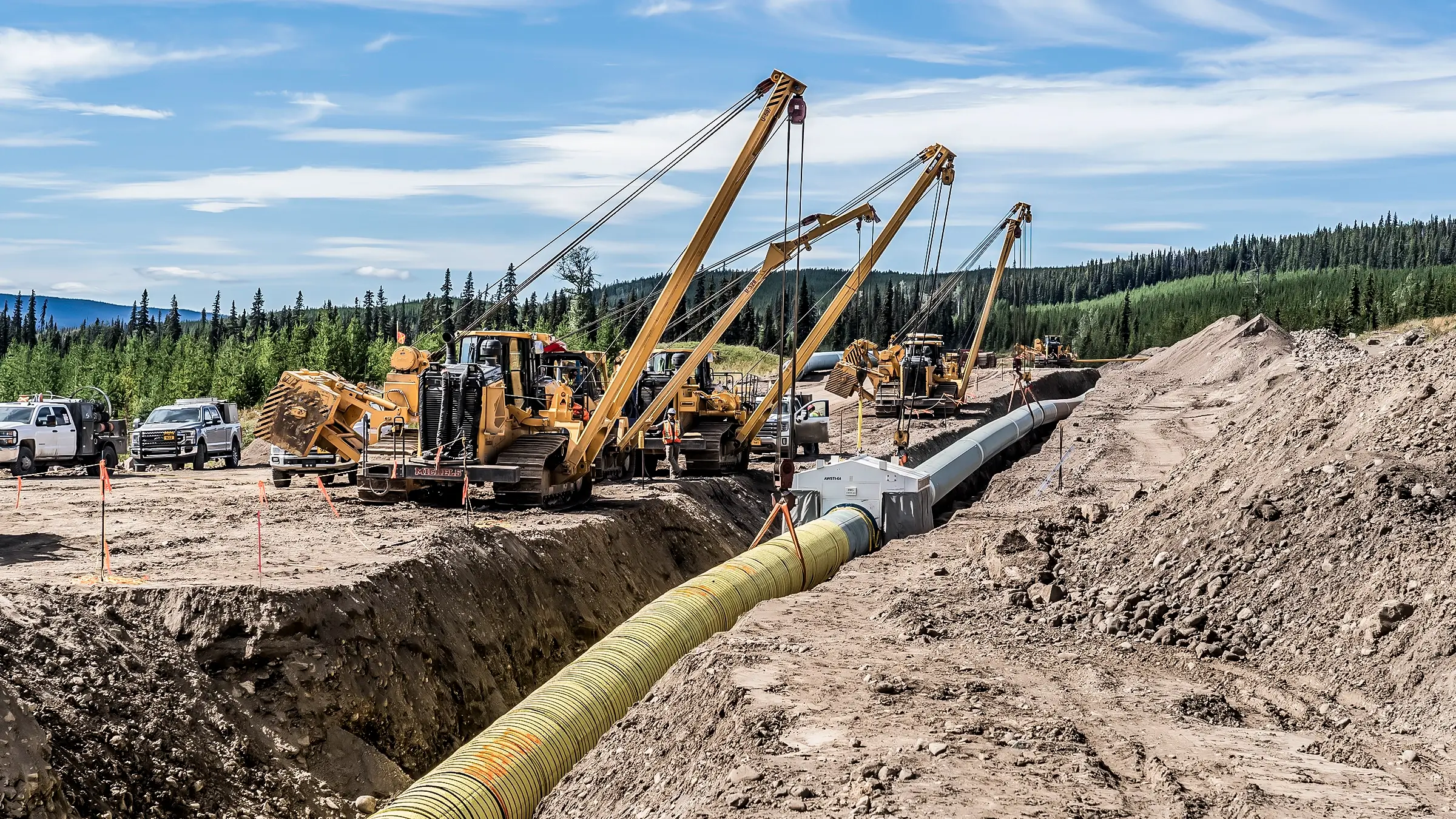Things to Consider Before Starting Your Project With Creek Pipe Midland
What You Need To Find Out About Pipe Trenching Providers: A Comprehensive Introduction of Available Options
Pipe trenching services are important for the installation and upkeep of underground utilities. They entail numerous approaches customized to specific requirements and atmospheres. Understanding these approaches is crucial for reliable task implementation. Each choice presents its own set of benefits and obstacles. As the need for effective energy administration boosts, understanding what to think about when choosing a trenching solution becomes necessary. What factors should one prioritize to assure success?
Recognizing Pipe Trenching: What It Is and Why It Matters
Although typically neglected, pipeline trenching is a crucial process in various building and energy jobs. This method entails excavating narrow trenches to promote the installment of pipes for water, gas, sewer, and telecommunications. The value of pipeline trenching exists in its role in making sure that these necessary systems are correctly integrated right into framework, making it possible for the risk-free and reliable shipment of essential services.Proper trenching is essential for maintaining the integrity of pipes and decreasing dangers linked with soil erosion and collapses. It additionally permits effective assessments and upkeep of below ground utilities. In addition, understanding the regional regulations and environmental considerations is vital, as improper trenching can lead to pricey hold-ups and lawful problems. Ultimately, pipe trenching acts as the foundational action that sustains various building and construction endeavors, making it a significant facet of contemporary facilities advancement.
Usual Trenching Methods for Below Ground Energies
In the domain of underground utilities, numerous trenching techniques play a crucial duty in installation and maintenance - Creek Pipe roustabout. The open-cut trenching approach, directional dull technique, and hydro excavation process each deal special benefits depending upon the certain job needs. Recognizing these approaches is important for effective and effective energy monitoring
Open-Cut Trenching Approach
Open-cut trenching is an extensively utilized approach for setting up underground energies, especially when the depth and size of the trench permit efficient gain access to. This technique includes excavating a trench along the suggested path of the utility, supplying direct visibility and availability for installment. It is especially beneficial for jobs that require comprehensive excavation, as it facilitates quick setup and assessment. However, it additionally demands careful planning to reduce interruption to the surrounding location, consisting of web traffic and existing structures. Open-cut trenching is most effective in open rooms where the soil problems agree with, yet it might be limited in urban atmospheres as a result of the visibility of existing energies and other underground challenges.
Directional Boring Method

Hydro Excavation Process
How does hydro excavation stick out among typical trenching approaches for underground utilities? Hydro excavation utilizes high-pressure water and vacuum innovation to safely remove soil, permitting exact excavating around delicate underground utilities. This technique decreases the danger of harmful existing framework compared to conventional mechanical excavation. By employing water to loosen the soil, hydro excavation offers a less invasive approach, minimizing the capacity for soil compaction and making sure a cleaner worksite. Additionally, the procedure improves exposure during excavation, enhancing general accuracy and performance. Hydro excavation is particularly valuable in city locations where utility lines are largely packed, making it a favored selection for professionals concentrated on safety and security and precision in below ground tasks.
Advantages of Trenching Services
While numerous approaches exist for setting up underground energies, trenching solutions use distinctive advantages that make them a recommended choice for many tasks. One significant benefit is the cost-effectiveness of trenching, as it usually requires less customized equipment compared to options like hydro excavation. This commonly causes lower labor and operational prices. Furthermore, trenching can fit a vast variety of utility types, including water, sewage system, and gas lines, offering adaptability for contractors.Moreover, trenching enables reliable accessibility to several lines in a single excavation, lessening disturbance to the surrounding location. The process likewise makes it possible for accurate setup and fixing, which is crucial for sticking to governing standards and making certain long-term reliability. Eventually, trenching can be implemented fairly quickly, decreasing project timelines and permitting for faster solution reconstruction. These benefits collectively make trenching solutions a functional option for several below ground utility projects.
Negative aspects and Challenges of Trenching
Despite the various advantages of trenching solutions, there are remarkable downsides and challenges that should be thought about. One significant challenge is the capacity for soil instability, which can lead to cave-ins, posing dangers to workers and equipment. Additionally, trenching can disrupt existing energy lines, necessitating careful preparation and sychronisation to prevent service disturbances. The process can also be taxing, especially in urban locations where area is restricted and gain access to is limited. Furthermore, trenching might need considerable authorizations and governing compliance, adding intricacy and prospective delays to tasks. Environmental worries, such as dirt disintegration and damages to local ecological communities, can arise from improper trenching practices. The expenses associated with trenching, consisting of labor and tools, can escalate if unanticipated concerns develop throughout the job, making it important for stakeholders to consider these difficulties versus the benefits when considering trenching solutions.
Key Factors to Take Into Consideration When Picking a Trenching Service
Choosing the appropriate trenching solution can considerably affect the success of a job. A number of crucial aspects ought to be analyzed to ensure an ideal choice. First, the company's experience and proficiency in trenching procedures are vital; a reputable service with a solid record is usually much more reputable. Next, evaluating the equipment made use of is essential, as contemporary machinery can improve effectiveness and precision. Furthermore, it is substantial to take into account the variety of services provided, including excavation deepness and dirt kind handling, to confirm they meet particular task requirements.Another factor to review is the business's reputation; customer evaluations and testimonies can give insights right into previous performance. Getting detailed quotes that outline costs and timelines will certainly assist in budget plan administration. Confirming conformity with local policies and sector standards is essential for avoiding possible legal concerns. Web Site By reviewing these aspects, customers can make a notified choice when selecting a trenching service.
Safety And Security Measures in Pipe Trenching
In pipe trenching, safety procedures are important to ensuring employee security and site honesty. Key parts include the use of personal protective tools, complete excavation site evaluations, and distinct emergency situation reaction protocols. Implementing these procedures substantially minimizes risks connected with trenching procedures.
Personal Protective Devices
Safety and security in pipe trenching heavily relies upon the correct use personal protective devices (PPE) Employees should use construction hats to shield against falling items, along with high-visibility vests to boost their visibility on-site. Steel-toed boots are vital for foot security against heavy equipment and materials. Furthermore, handwear covers are essential for hand safety and security, find this particularly when managing harsh or sharp things. Respirators might additionally be required in atmospheres with dirt or hazardous fumes. Eye protection, such as security goggles, must be put on to shield against particles. Hearing security is crucial in loud job settings. By adhering to PPE standards, employees can substantially decrease the danger of injury and assure a safer trenching procedure.
Excavation Website Assessment
Effectively checking the excavation website is a basic action in ensuring a secure pipe trenching operation. This process entails assessing the website for prospective hazards such as below ground energies, unstable dirt conditions, and close-by structures. A comprehensive assessment enables the recognition of risks that can jeopardize employee safety. Additionally, validating the dirt type and wetness levels can assist identify appropriate shoring approaches to avoid trench collapses. It is important to ensure that the site is free from debris which appropriate signs is shown to alert workers of ongoing procedures. Regular inspections throughout the task can likewise help detect any changes in website conditions, making it possible for timely changes to precaution and work methods.

Emergency Action Protocols
Emergency situation reaction procedures are essential in mitigating risks related to pipe trenching operations. These methods guarantee that all workers are prepared to act swiftly and efficiently in emergency situations. Crucial element include routine security drills, clear interaction networks, and designated fire escape. Furthermore, first-aid sets and emergency situation contact numbers ought to be readily accessible on-site. Trenching operations should likewise include procedures for dealing with harmful scenarios, such as cave-ins or utility strikes. Educating workers on recognizing prospective threats and understanding their functions throughout an emergency situation is vital. Preserving an upgraded website safety and security plan can greatly enhance reaction efficiency. In general, effective emergency situation readiness cultivates a much safer working atmosphere and minimizes the influence of unanticipated events.
Cost Factors To Consider for Trenching Providers
Comprehending the financial implications of trenching solutions is necessary for job planning and budgeting. The prices related to trenching can vary widely based upon a number of factors, consisting of task dimension, dirt type, and deepness of the trench. Labor expenses frequently stand for a considerable portion of the complete expense, as experienced drivers are needed for effective implementation. Additionally, devices rental charges can add to the general budget, particularly for specialized machinery.Site availability is another tractor loader backhoe for sale vital element; difficult surface may demand extra resources, raising costs. Allowing and regulative compliance can additionally contribute to costs, particularly in metropolitan areas where guidelines are stringent.Lastly, unanticipated problems, such as experiencing existing utilities, can result in unexpected prices and hold-ups. Consequently, obtaining detailed price quotes from credible trenching service providers is necessary for precise budgeting and guaranteeing effective job completion.
Often Asked Questions
How Long Does a Normal Pipe Trenching Job Take?
The period of a typical pipe trenching task varies considerably based upon variables such as deepness, soil conditions, and job complexity. Usually, it can take anywhere from a couple of days to several weeks to complete.
What Devices Is Frequently Made Use Of in Pipe Trenching?

Are There Environmental Regulations for Trenching Activities?
Ecological guidelines for trenching tasks commonly need compliance with regional, state, and federal guidelines. These policies aim to minimize ecological disruption, protect water resources, and assurance appropriate waste administration during excavation and installment procedures.
Can Trenching Services Be Combined With Other Construction Tasks?
Trenching services can indeed be integrated with different construction projects. By working with initiatives, effectiveness can be accomplished, decreasing disturbances while ensuring that all required infrastructure work is completed in a prompt and economical way.
What Are Common Dirt Types Run Into in Trenching?
Typical soil kinds experienced in trenching consist of clay, sand, silt, and loam. Each kind offers special challenges, impacting excavation methods and stability, demanding careful preparation to ensure risk-free and reliable trenching operations.